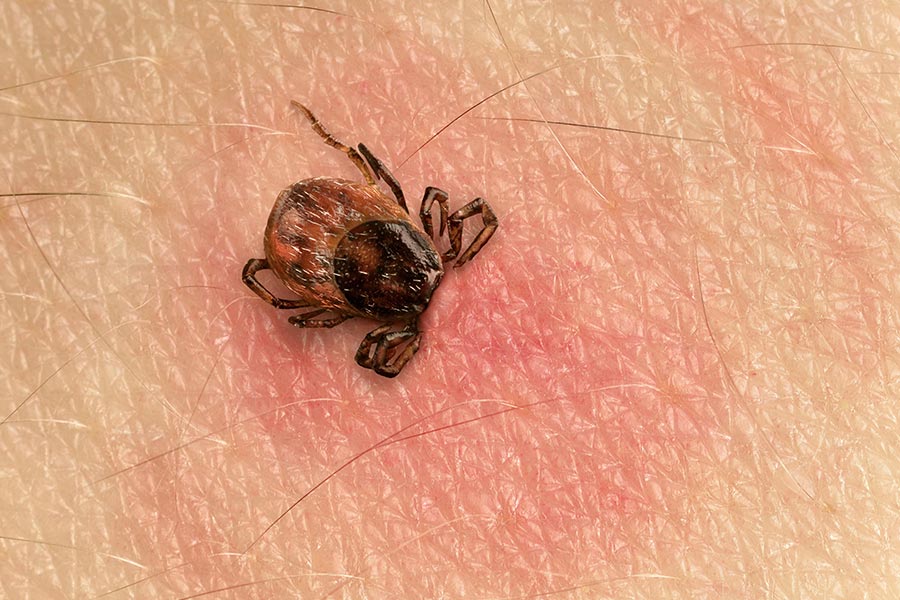Recognizing Lyme Disease-- Necessary Recognition for Avoidance
Lyme condition continues to be a significant public health issue, mainly transmitted via the bites of contaminated ticks, particularly in areas with thick vegetation. The early identification of Lyme condition is important, yet several people continue to be unaware of its symptoms or the settings that pose the highest risk.
What Is Lyme Disease?
If left untreated, Lyme condition can advance to much more severe phases, potentially affecting the joints, heart, and nervous system. Patients may experience arthritis, neurological problems, or cardiac conditions. The disease can be challenging to detect, as its symptoms can imitate those of other diseases. Diagnostic techniques normally include a combination of clinical assessment and lab screening, including serological assays to find antibodies against Borrelia burgdorferi.
Prompt recognition and therapy are essential in handling Lyme disease and avoiding complications, with early antibiotic treatment typically bring about favorable outcomes.
Just How Lyme Condition Spreads
Lyme illness mainly spreads out via the bite of infected black-legged ticks, likewise referred to as deer ticks, which lug the bacterium Borrelia burgdorferi. These ticks are generally discovered in woody or grassy locations, usually living on hedges or low vegetation. They need a blood meal from a host, such as animals or human beings, to prosper and duplicate.
Transmission usually takes place when ticks affix to the skin and remain for a long term duration, generally 24 to two days. The danger of infection raises with the duration of attachment, as the germs is transmitted from the tick's saliva right into the host's bloodstream. Ticks can be active throughout warmer months, particularly in spring and summer, making outdoor activities a potential risk for exposure.
While black-legged ticks are the key vectors, various other types, such as the Western black-legged tick, can also send Lyme illness. It is necessary to be vigilant in locations where ticks prevail. Preventative procedures include wearing safety clothes, using tick repellents, and conducting complete tick checks after exterior activities to reduce the likelihood of attacks and succeeding transmission of Lyme disease.
Signs And Symptoms and Diagnosis
Identifying the symptoms of Lyme condition is essential for timely medical diagnosis and therapy, as early intervention can substantially impact recuperation. The most recognizable early signs and symptom is the erythema migrans breakout, which looks like a round, red lesion with a main clearing, commonly resembling a "bull's- eye." This rash generally develops within 3 to thirty days after a tick bite and may be accompanied by flu-like signs such as high temperature, cools, fatigue, muscular tissue aches, and headaches.

Diagnosis of Lyme illness primarily depends on medical analysis, considering the person's symptoms and prospective direct exposure to ticks in native to the island areas. Laboratory tests, consisting of enzyme-linked immunosorbent assays (ELISA) followed by Western blot tests, can support the medical diagnosis yet are not definitive in early-stage Lyme disease. Motivate recognition and diagnosis are necessary for starting proper antibiotic therapy, which is most reliable when carried out early in the condition training course.
Prevention Techniques
Protecting against Lyme condition needs a proactive strategy, especially for individuals who spend time in areas where ticks are widespread. In addition, putting pants into socks and utilizing tick-repellent items containing DEET or permethrin can considerably lower the danger of tick accessory.
Regularly inspecting oneself, children, and family pets for ticks after outdoor tasks is essential. Ticks ought to be quickly gotten rid of utilizing fine-tipped tweezers, understanding them as near to the skin's surface as possible. It is a good idea to bath within two hours of returning indoors, as this can assist remove ticks before they attach.

Therapy Alternatives
Reliable management of Lyme disease pivots on proper and prompt treatment alternatives, which largely include antibiotic treatment. The option of antibiotics and the period of therapy usually rely on the phase of the disease and the extent of signs. Early localized Lyme illness is frequently treated with oral prescription antibiotics such as doxycycline, amoxicillin, or cefuroxime axetil for a duration of 10 to 21 days. This strategy is typically reliable in eradicating the infection and protecting against further difficulties. Lymecare Alliance.
In cases of very early disseminated Lyme condition, where neurological or cardiac signs may develop, a longer training course of dental antibiotics or intravenous anti-biotics may be necessitated. For individuals experiencing relentless signs and symptoms after first therapy, called Post-Treatment Lyme Disease Syndrome (PTLDS), an extra complex monitoring approach might be needed. This can include a multidisciplinary method, attending to not just the physical signs and symptoms More about the author but likewise emotional aspects, as tiredness and cognitive difficulties prevail.
It is essential for patients to engage in open interaction with their medical care providers to customize therapy plans to their specific demands, making certain the very best possible end results in the administration of Lyme disease.
Conclusion
Lyme condition presents considerable health threats mainly due to its transmission by means of infected black-legged ticks. Continued awareness and education about Lyme illness are essential in mitigating its impact, thereby advertising healthier neighborhoods and securing public health and wellness versus this pervasive tick-borne disease.
Lyme illness primarily spreads out via the bite of contaminated black-legged ticks, likewise recognized as deer ticks, which bring the bacterium Borrelia burgdorferi. Lymecare Alliance.While black-legged ticks are the primary vectors, other types, such as the Western black-legged tick, can additionally transmit Lyme disease. Preventative steps consist of putting on safety apparel, using tick repellents, and conducting thorough tick checks after outside tasks to lower the possibility of bites and subsequent transmission of Lyme illness
Medical diagnosis of Lyme illness primarily counts on professional analysis, taking into account here are the findings the person's symptoms and potential exposure to ticks in endemic locations.Lyme condition postures substantial health and wellness dangers mainly due to its transmission using contaminated black-legged ticks.